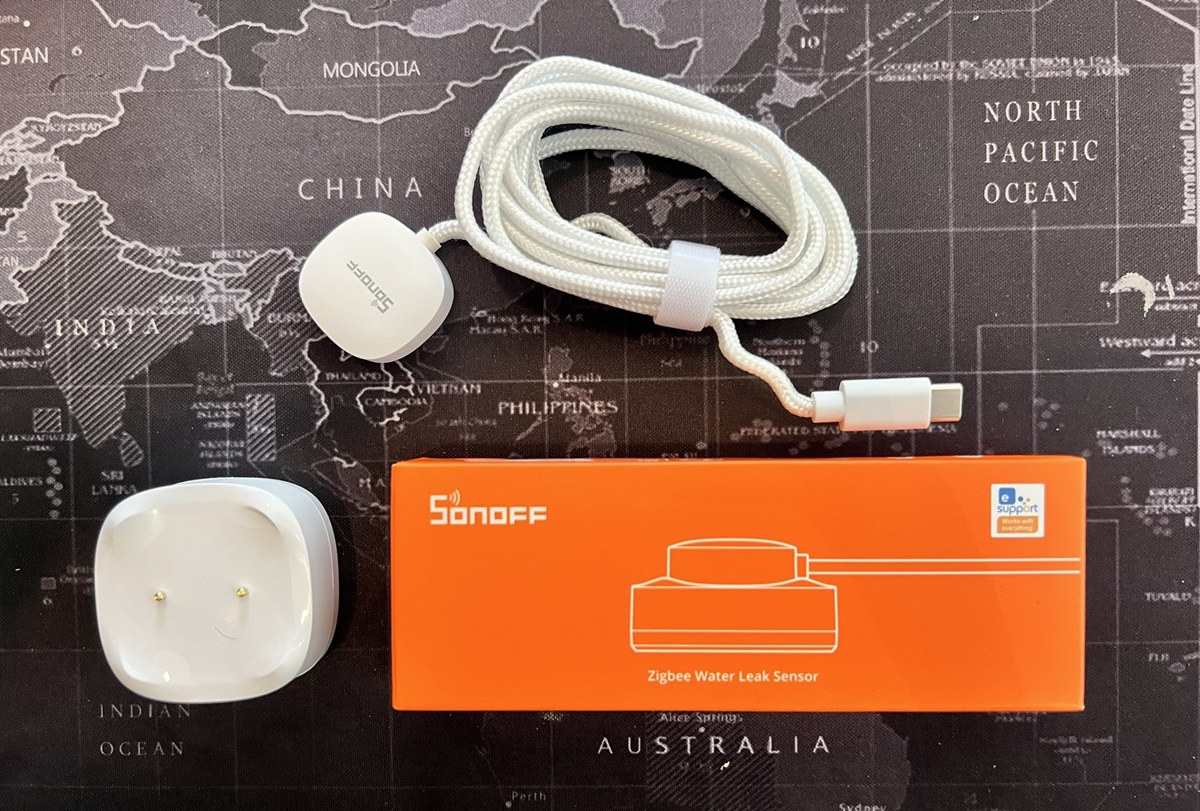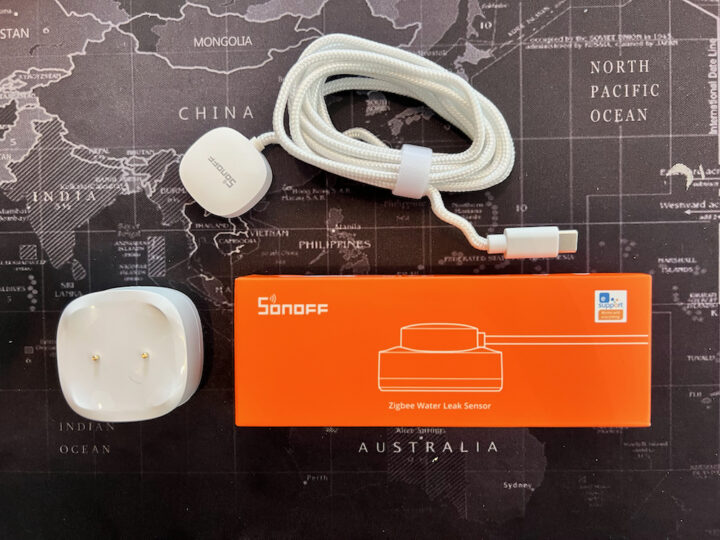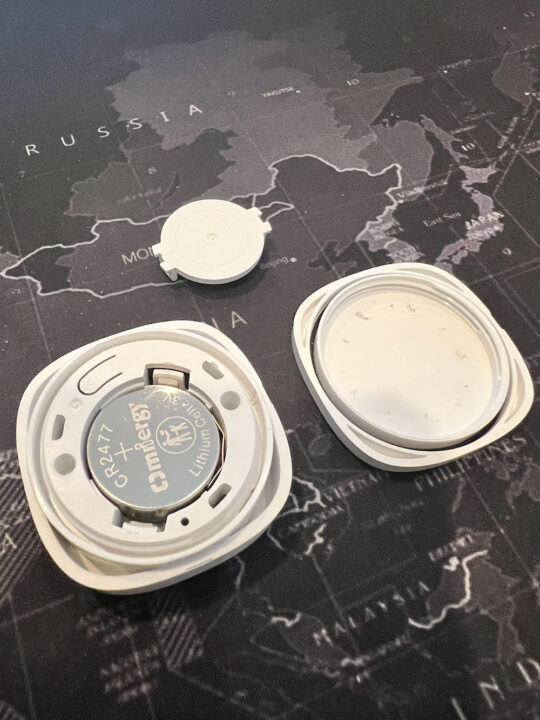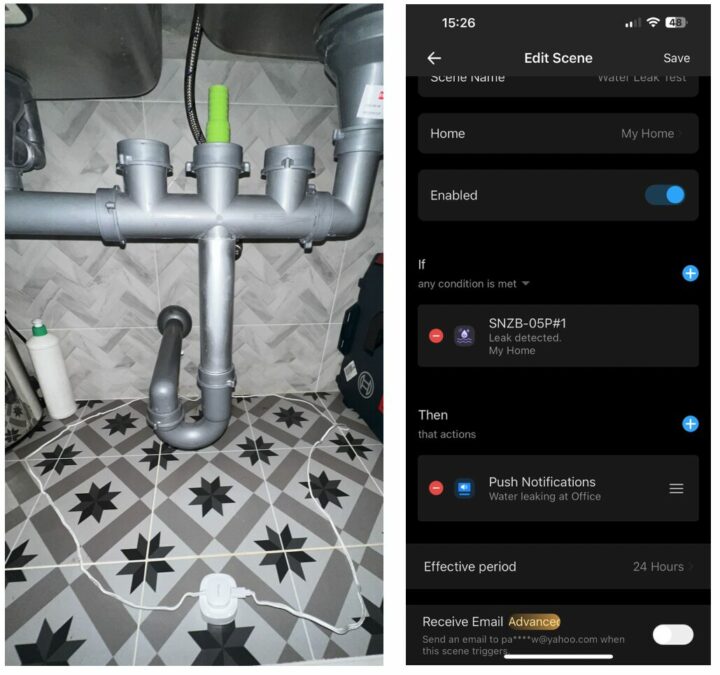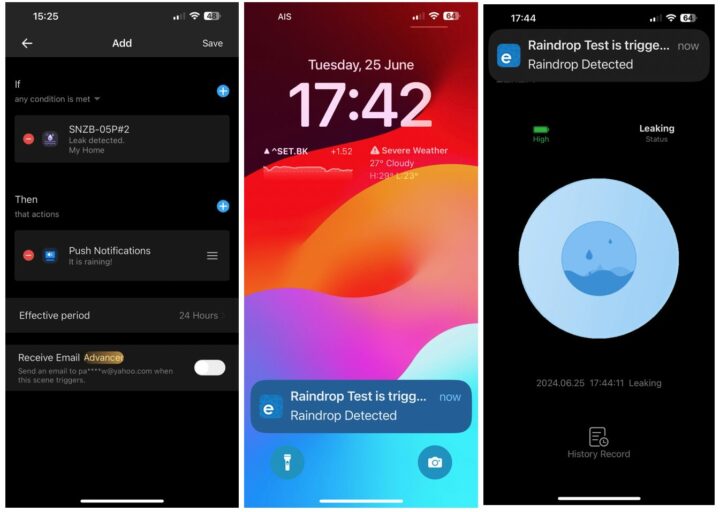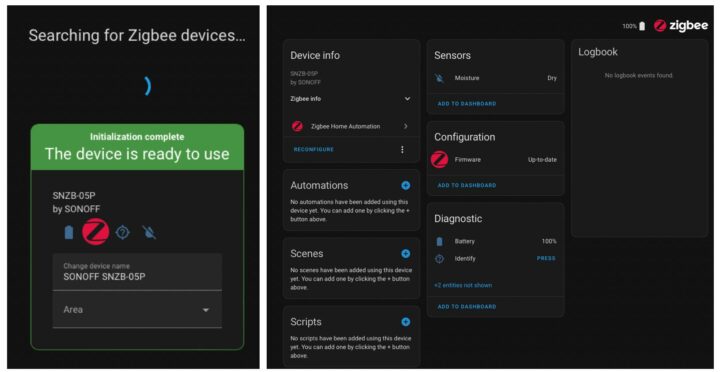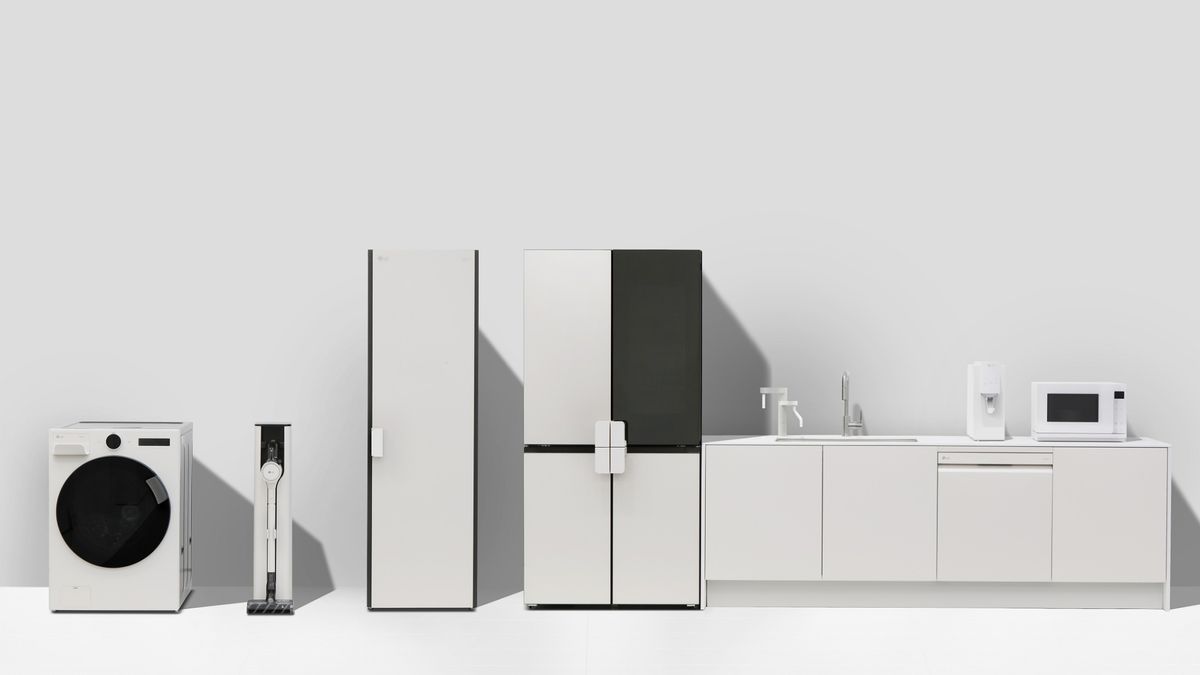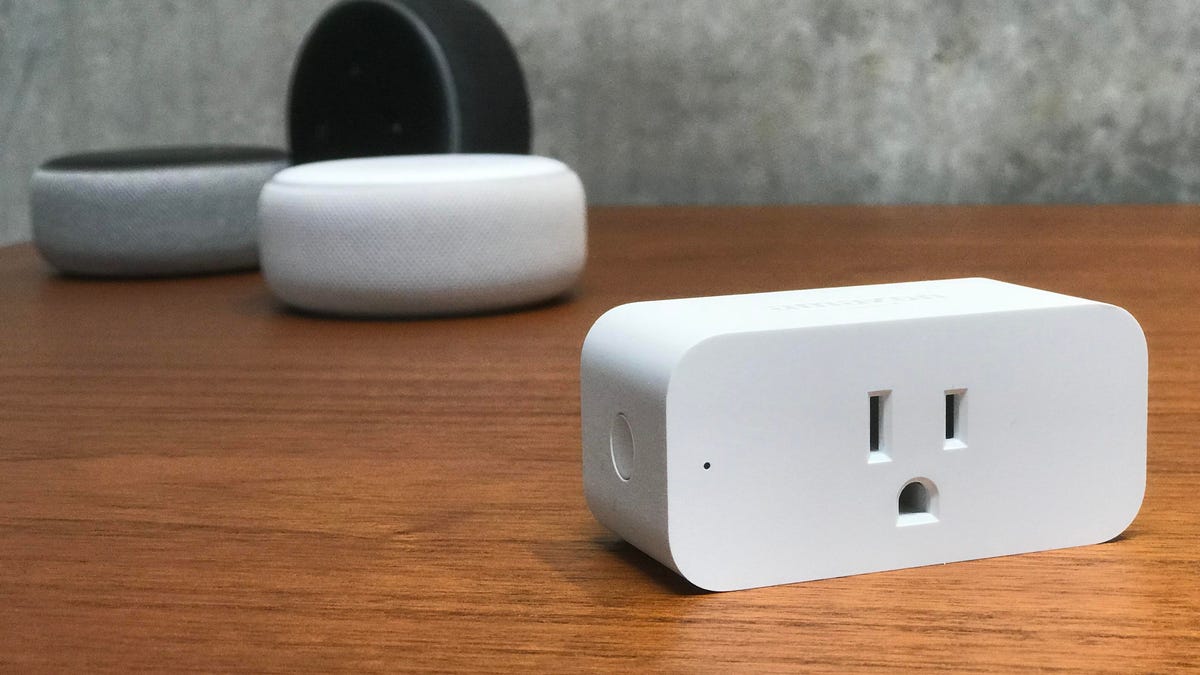Today, we will review another new sensor from SONOFF, the SNZN-05P Zigbee water leak sensor. This is SONOFF’s first-ever water leak detection sensor. In the past, we have reviewed other Zigbee sensors that were upgraded from previous models. SONOFF enthusiasts will likely be pleased because a water leak detection sensor is something that should have been part of the SONOFF ecosystem for a long time. That is a bit late in the game, but it has a unique feature: an Extended Detection Cable that can detect water leaks. Let’s take a look!
SONOFF SNZB-05P Water Leak Sensor Unboxing
Inside the box, you’ll find the sensor, an Extended Detection Cable (2m), cable clips, and a small manual. The SNZB-05P is water-resistant with an IP67 rating (submersible up to 1 meter for 30 minutes). It uses a CR2477 battery, similar to other SONOFF Zigbee sensors, which should last several years. Both terminals are gold-plated to reduce corrosion in humid environments or even for outdoor use.
Before using the sensor, you need to open the back cover by twisting it firmly and remove a thin plastic sheet to activate the battery. Inside, there is a small button for pairing and a small LED to indicate the pairing status. If you need to replace the battery, you will have to unscrew it first, as shown in the image below. The waterproofing seems to be well-designed.
The sensor itself has two gold-plated terminals for detecting water leaks. The principle is straightforward: if water, which conducts electricity, connects the two terminals, low-voltage electricity will flow from one terminal to the other, and the sensor can detect this. That’s why the two terminals must be placed face-down on the floor. What’s interesting is the Extended Detection Cable which has a USB-C connector. We initially assumed it was for daisy-chaining multiple SNZB-05P sensors together to exchange data, but that’s not the case. It simply extends the detection range (the cable has exposed wires inside covered with nylon fabric). Connecting the cable to the sensor is done magnetically, making it easy and convenient. When connected, the gold terminals of the sensor link with the cable, extending the detection range. If the water contacts the cable, it will also detect the leak.
In practical use, imagine placing it around a washing machine. Instead of detecting specific spots, this cable allows for area-wide detection. The fun part is that you can keep extending the 2-meter-long Extended Detection Cable using the USB-C connector as multiple hops. We believe this greatly expands its usability. Let’s experiment with different scenarios.
Specifications
SNZB-05P sensor
- Wireless – Zigbee 3.0 with 130m line-of-sight range
- Battery – CR2477 (3V)
- Dimensions – 48 x 48 x 21.6mm
- Weight – 45 grams
- Casing material – PC+ABS
- Temperature Range – -10 to +60°C
- Humidity – 0 to 100% RH
WLDC20 extended detection cable
- Length – 2 meters
- Weight – 32g
- Material – PC+ABS
- Temperature Range – -10 to 60°C
- Humidity – 0 to 80% RH
Using SONOFF SNZB-05P with eWeLink
Adding the device to eWeLink is similar to other SONOFF Zigbee devices. You will need a Zigbee Bridge/Hub, preferably the SONOFF Zigbee Bridge Pro or SONOFF Zigbee Bridge Ultra. The steps to add the device are shown in the images below, from left to right. For this test, we used the SONOFF Zigbee Bridge Ultra which provides a a longer Zigbee signal range than other bridge models due to its Turbo feature as noted in the aforelinked review.
The operation is straightforward. When the sensor detects water underneath it (over 0.5mm high from the surface) or when the Extended Detection Cable connected to the sensor reaches a moisture level sufficient to conduct electricity, it will trigger a notification in eWeLink indicating a water leak (Leaking). See the images below for reference. You can also create scenes to trigger other actions, such as powering off a water pump, sounding an alarm on the Zigbee Bridge, or even sending notifications to your mobile device.
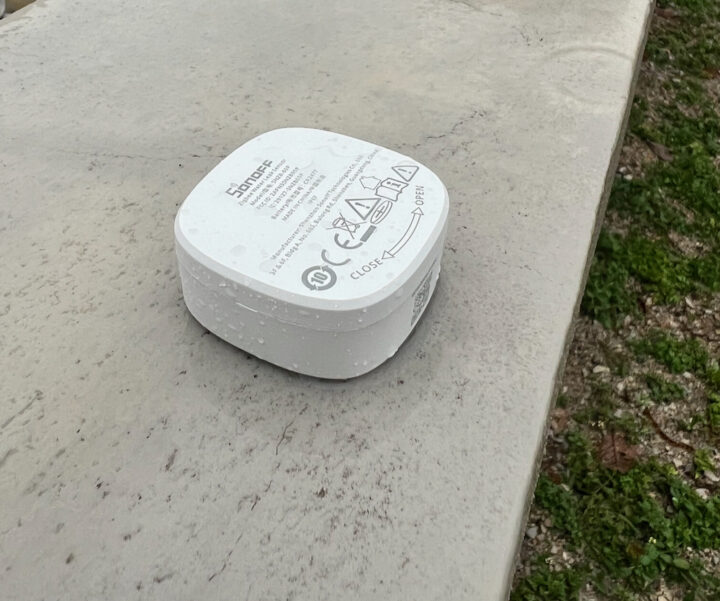
Testing the SNZB-05P for Water Leak Detection
We tested the SNZB-05P Zigbee water leak sensor by connecting the Extended Detection Cable to the sensor and placing it around the area under the kitchen sink, as shown in the images below. We found that having the cable provides flexibility in installation since it doesn’t need to be confined to a single point. Instead, it can cover a wider area. This installation method also could reduce the need for multiple sensors, as one sensor with the cable can monitor a larger area. Additionally, SONOFF sells the Extended Detection Cable separately if you need more than 2 meters.
After installing it under the sink, we set up a notification scene as shown in the image. The setup was straightforward and easy to use. The response when water contacts the cable or the terminals was almost instantaneous.
Testing the SNZB-05P for raindrop detection
Since the principle of the water Leak sensor can be applied to other uses, we will test it for raindrop detection. Normally, we would place the sensor outdoors to ensure it works best when it rains. However, given that it comes with an Extended Detection Cable, we thought that exposing the sensor directly to sun and rain might not be ideal for long-term use. So, we tried placing the sensor inside a waterproof plastic box and extending the cable outside to detect the moisture from rain falling on the concrete surface. This method should help extend the lifespan of the sensor. After securing the sensor in the box, we set up a simple notification scene as shown in the image.
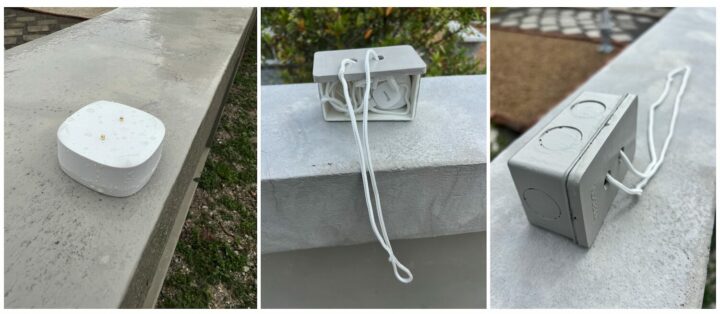
Nonetheless, after testing both water leak and raindrop detection, we found that using the Extended Detection Cable has some considerations:
After the water leak stops or the rain ceases, the nylon-wrapped cable takes quite a while to dry out completely and stop conducting electricity (compared to not using the cable, which generally takes less time for the water to evaporate completely) so that the sensor can detect the dry state again. To expedite drying, you might need to use something to blow hot air on it before reusing it.
In the case of water leaks, this shouldn’t be a problem as leaks shouldn’t happen frequently. However, for raindrop detection, which occurs more often, perhaps hourly or daily, it can take more than a day to return to dry conditions after the rain stops. Therefore, we think that using the cable for raindrop detection is not advisable as tested above.
To detect rain, the sensor should be placed in the same manner as for detecting water leaks: with the gold terminals facing down to allow water to rise and make contact. This method should be more effective and durable compared to facing the terminals upwards.
Testing SONOFF SNZB-05P Zigbee water leak sensor with Home Assistant
As usual with SONOFF Zigbee products, we can integrate the SNZB-05P sensor directly into Home Assistant (via ZHA or Zigbee2MQTT integration) or through the AlexxIT integration. In this test, we chose ZHA on Home Assistant 2024.6.4 running on a Raspberry Pi 4, using the SONOFF Zigbee USB Dongle ‘E’ as the Zigbee Coordinator. It is important to note that when integrating the SNZB-05P directly with Home Assistant, SONOFF specifies that it must be used with the SONOFF Zigbee USB Dongle. Nevertheless, we did not have the opportunity to test the SNZB-05P with other Zigbee Coordinators.
Adding the device through ZHA was straightforward. As shown in the images below, we obtained entities indicating Wet or Dry status along with the battery level, all of which can be used for creating Automations under Home Assistant.
Summary
We think the SONOFF SNZB-05P Zigbee water leak sensor is not bad. Its operation is straightforward and reliable, and its features are consistent whether you use it with eWeLink or Home Assistant. The most interesting aspect of this sensor is the included Extended Detection Cable, which adds flexibility for the deployment of the water leak detection solution. Instead of placing the sensor at specific points, you can now cover a wider area, such as around a washing machine or under a kitchen sink. Additionally, it can also function as a raindrop detection sensor since it operates on the same principle. The Extended Detection Cable helps prolong the sensor’s lifespan by protecting it from direct exposure to sun and rain, reducing corrosion. SONOFF offers options to purchase the sensor with or without the cable, allowing you to use it for various purposes as needed. We found the Extended Detection Cable which is a nylon-wrapped cable may take a while to dry out depending on your environment, so the sensor’s status changes back to “dry” slower than it should be.
We’d like to thank to SONOFF for sending the SNZB-05P Zigbee water leak sensor for review. It can be purchased for $15.90 as part of a kit with the sensor and extended detection cable, or you can get the sensor only for $9.90, and an extra extended detection cable costs $7.90. As usual, the CNXSOFTSONOFF coupon code reduces the price by ten percent on any order from the ITEAD store.


Computer Engineering who previously worked with multinational IT company, rich experience in IT infrastructure, has a passion on Internet Of Thing i.e., Smart Home, Smart Farm as well as interested on Sustainability such as renewable energy, organic farming
Support CNX Software! Donate via cryptocurrencies, become a Patron on Patreon, or purchase goods on Amazon or Aliexpress

